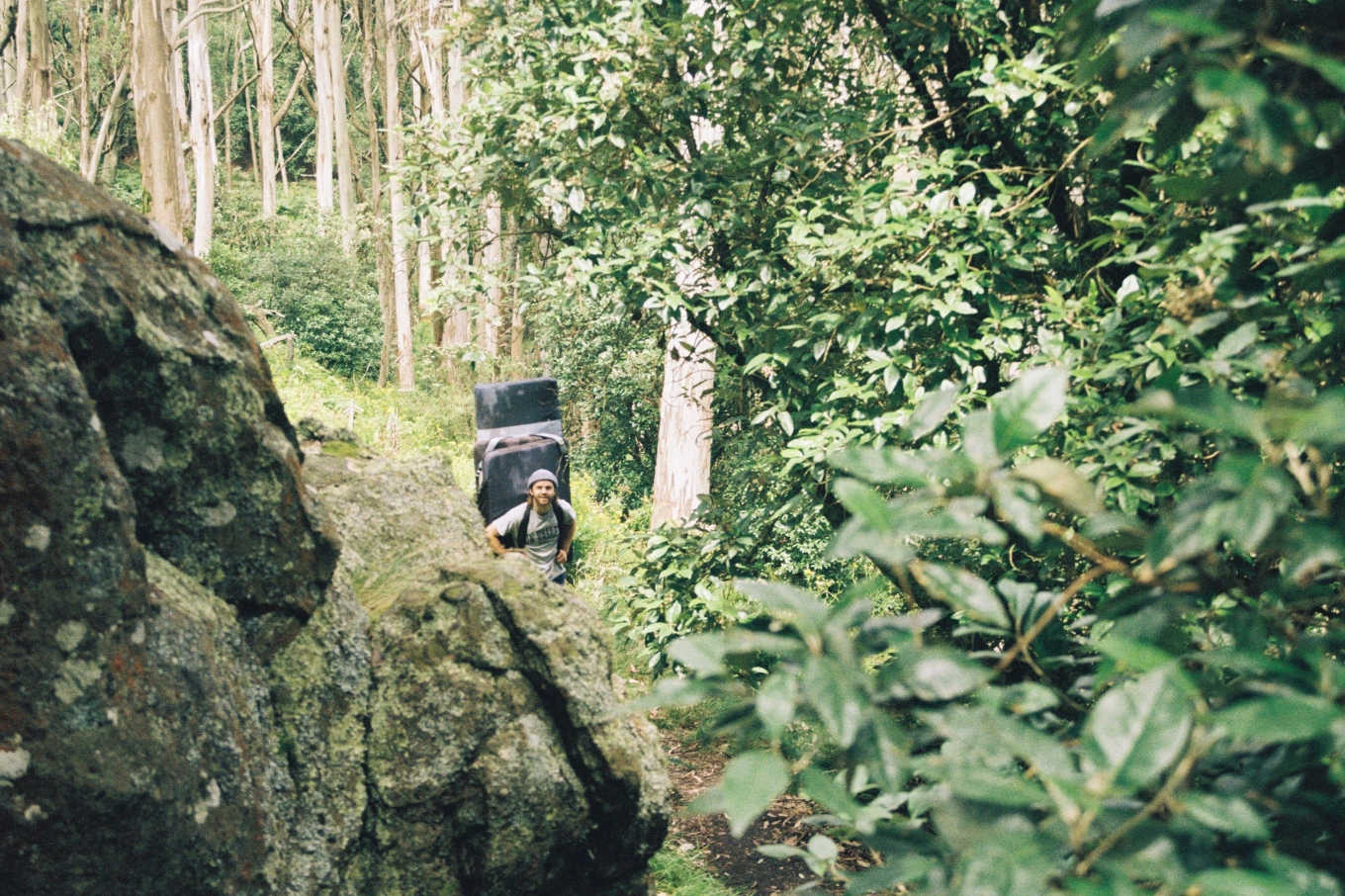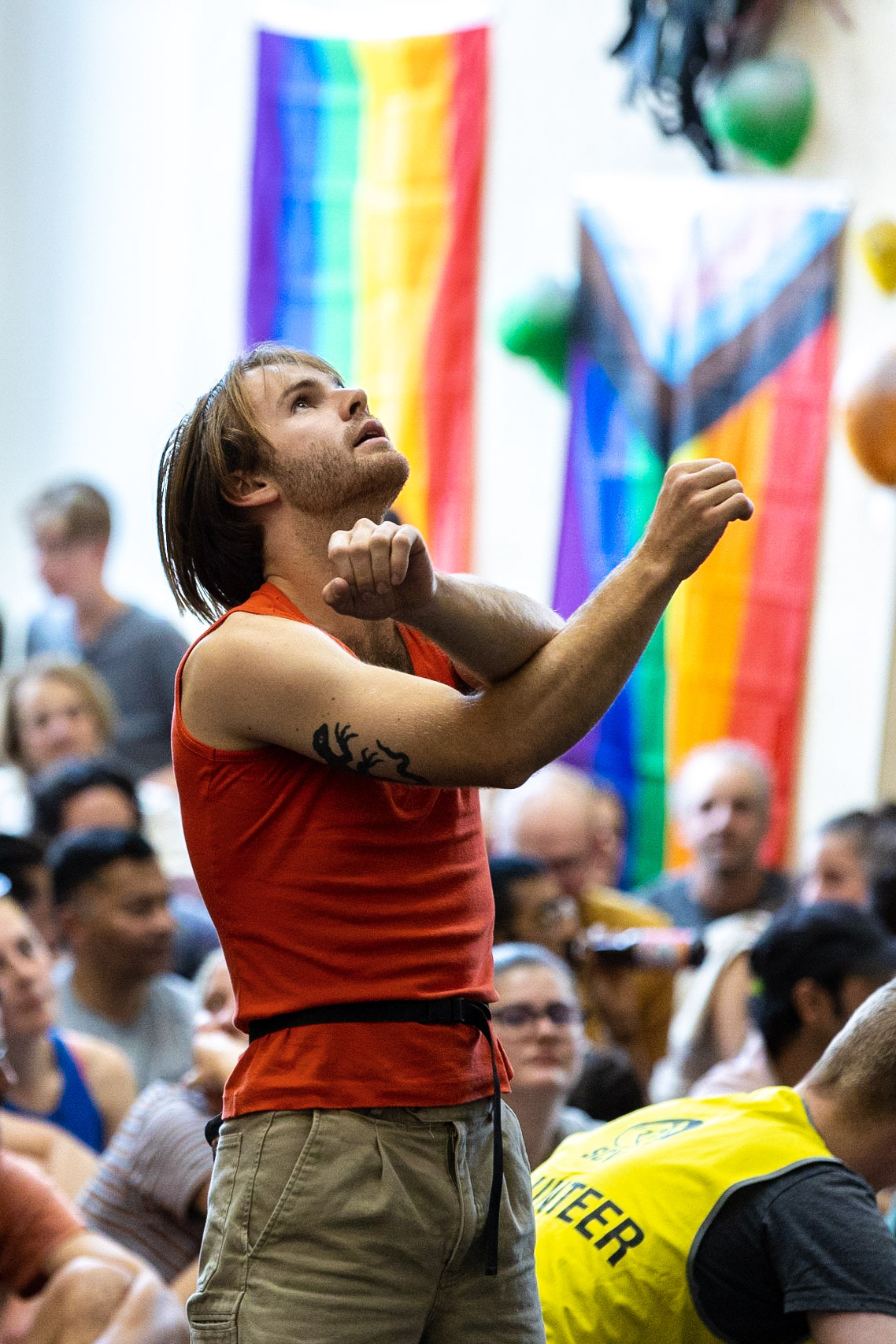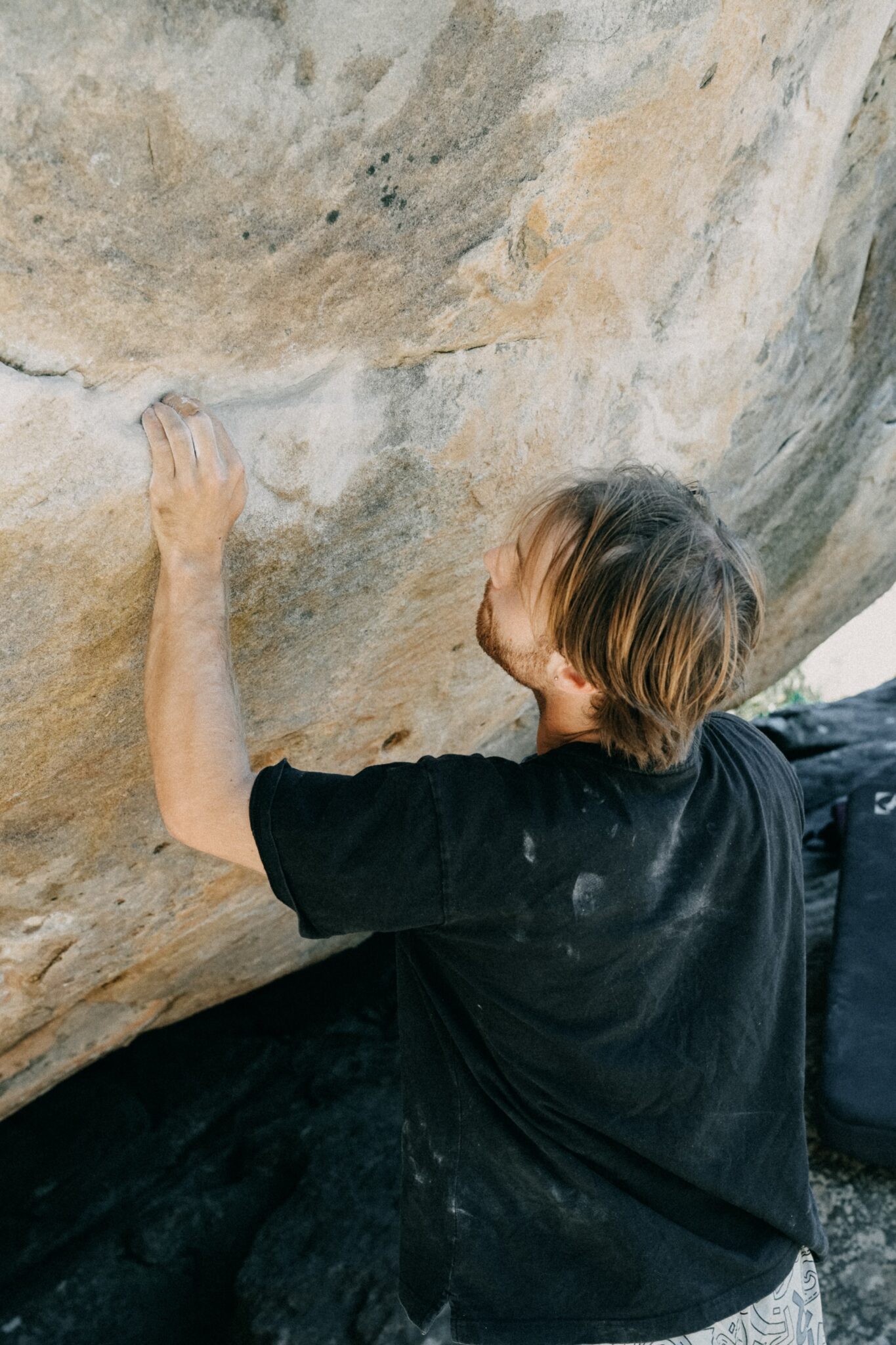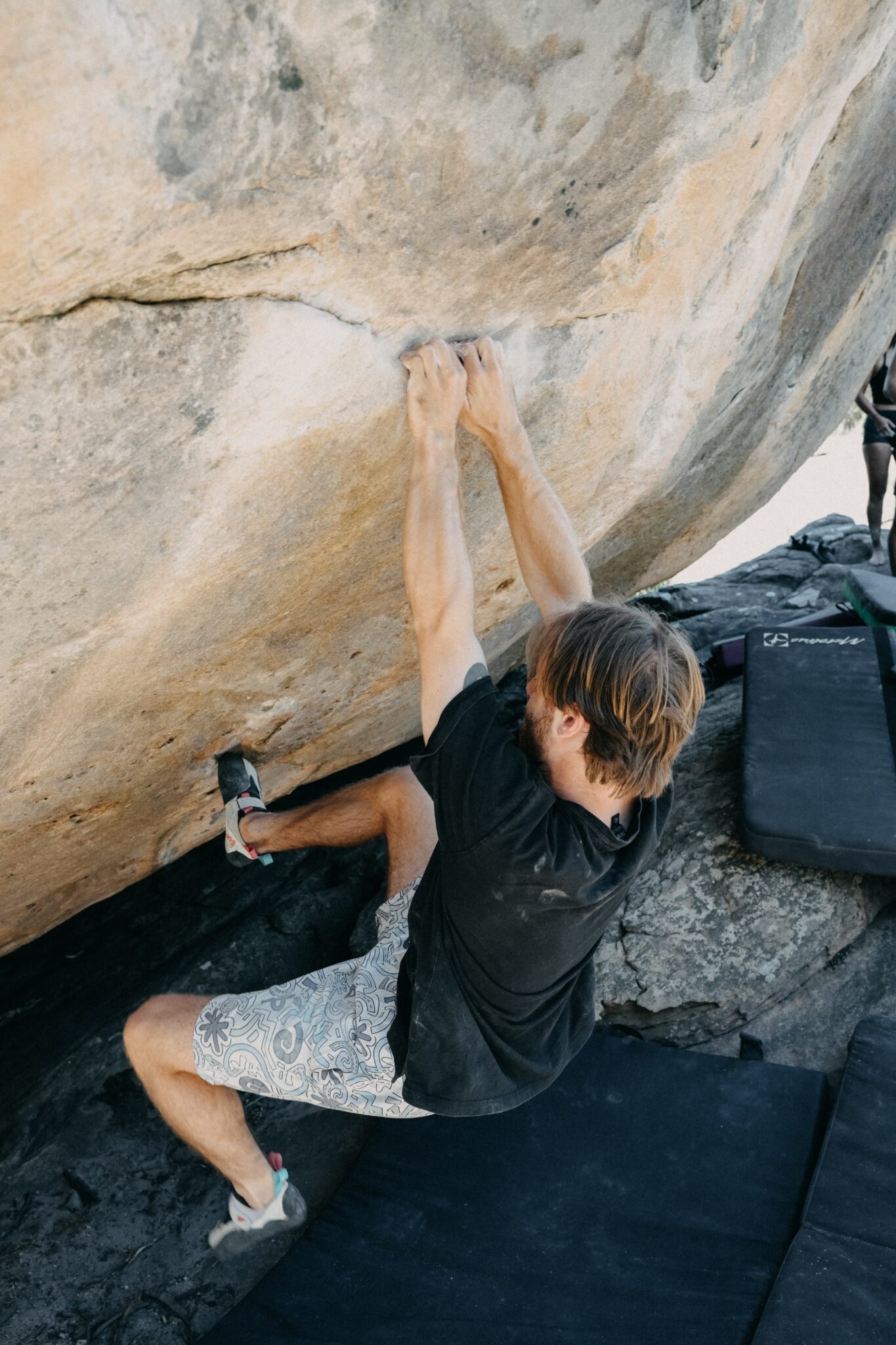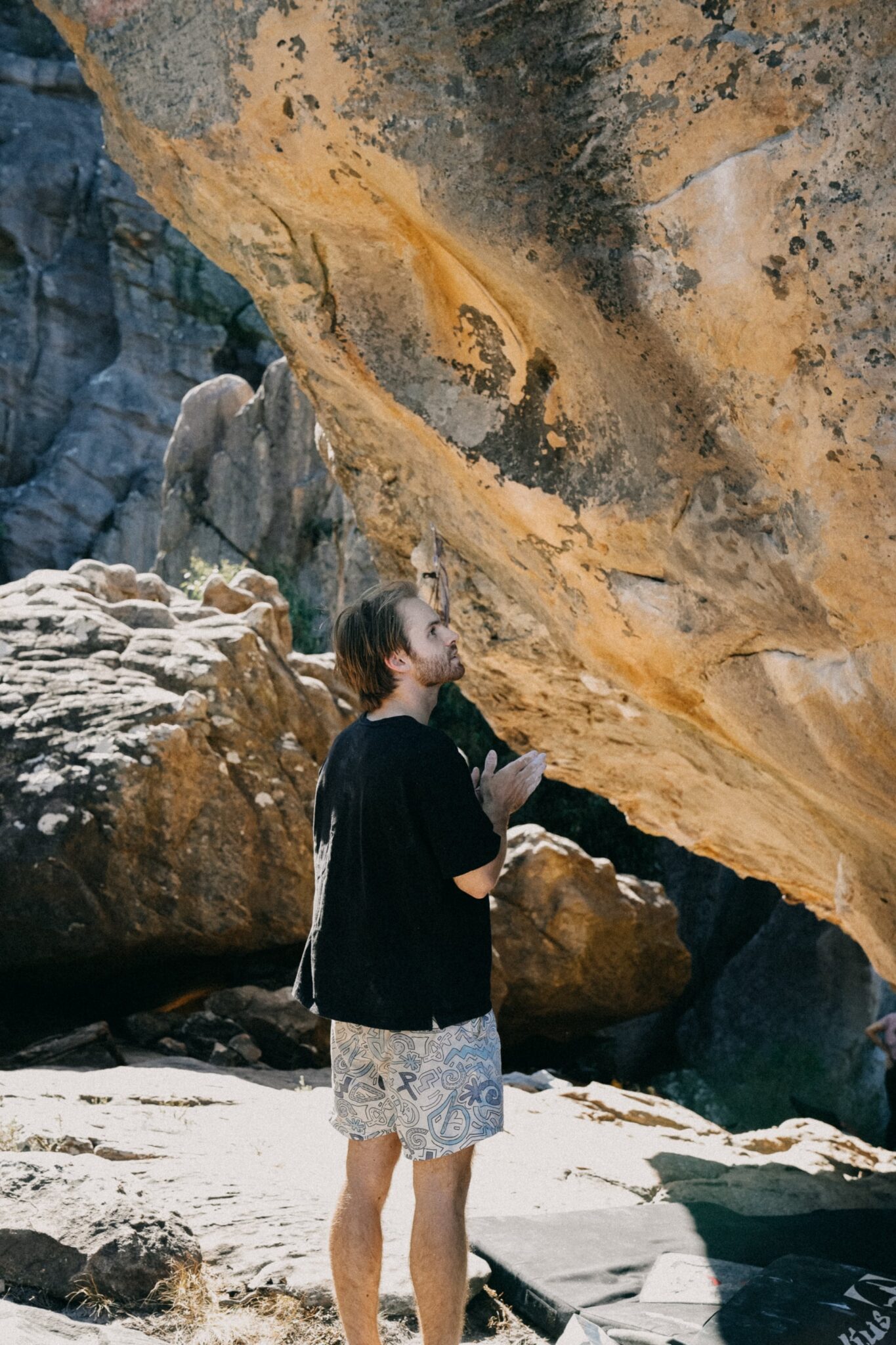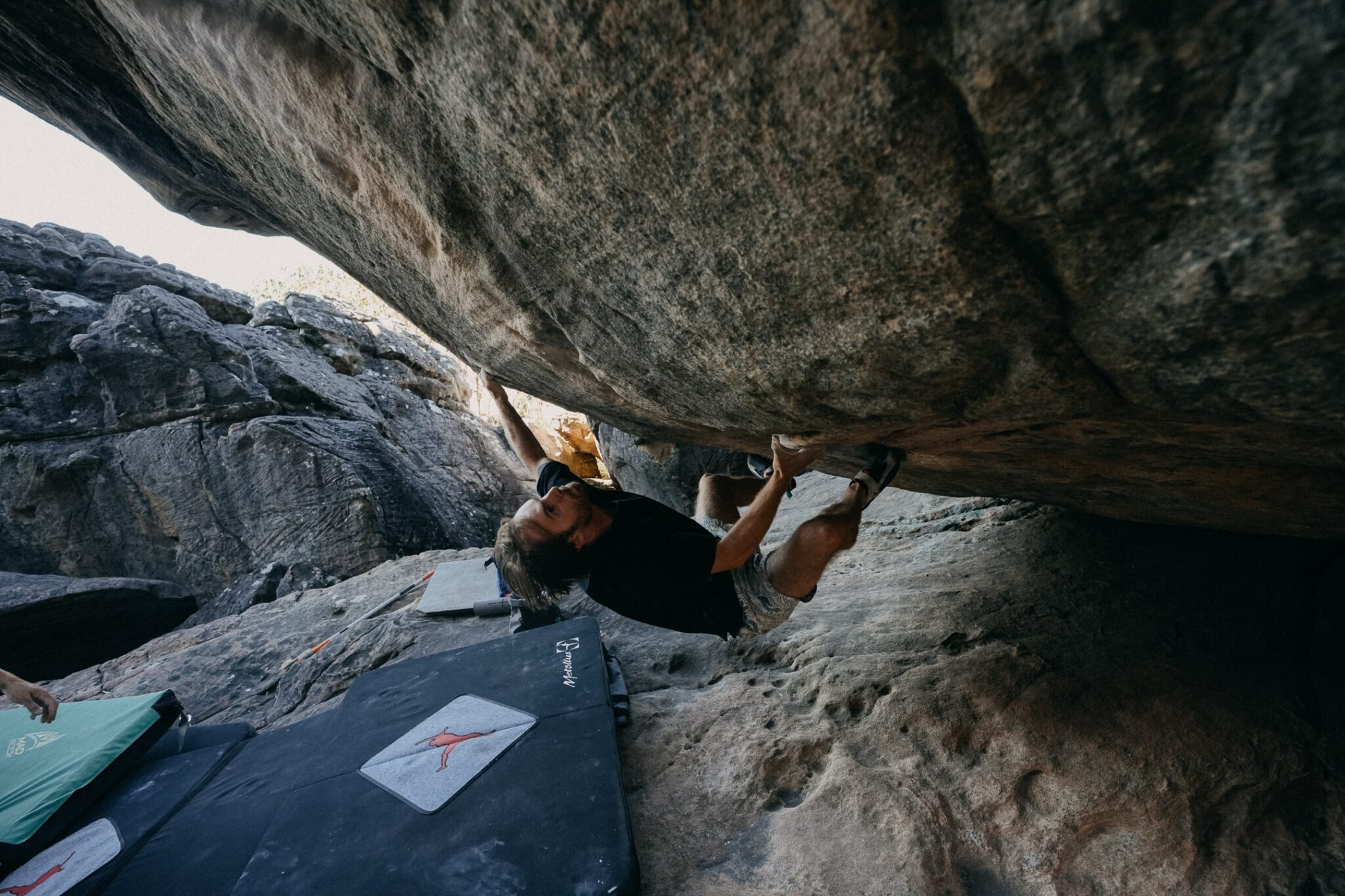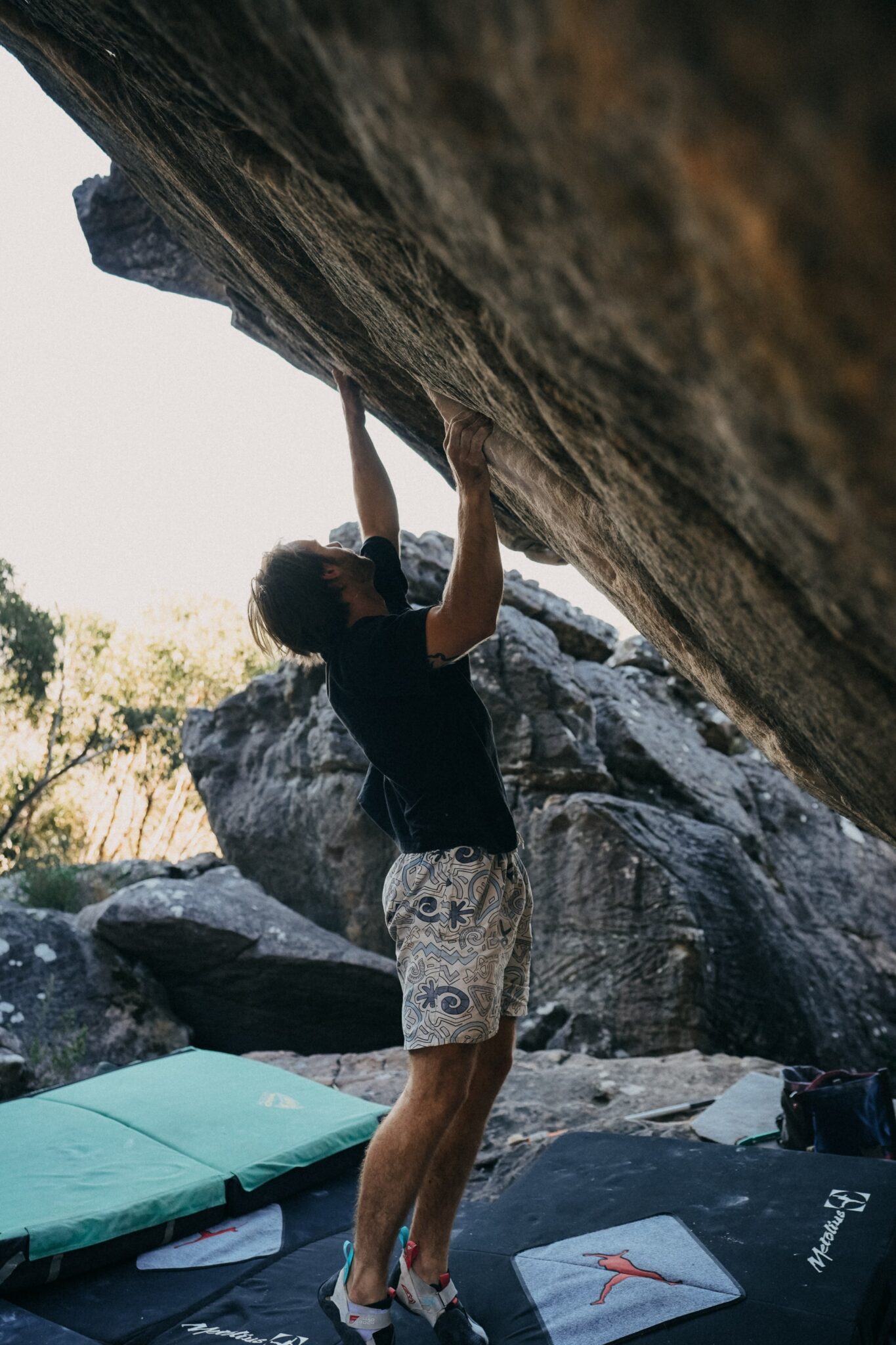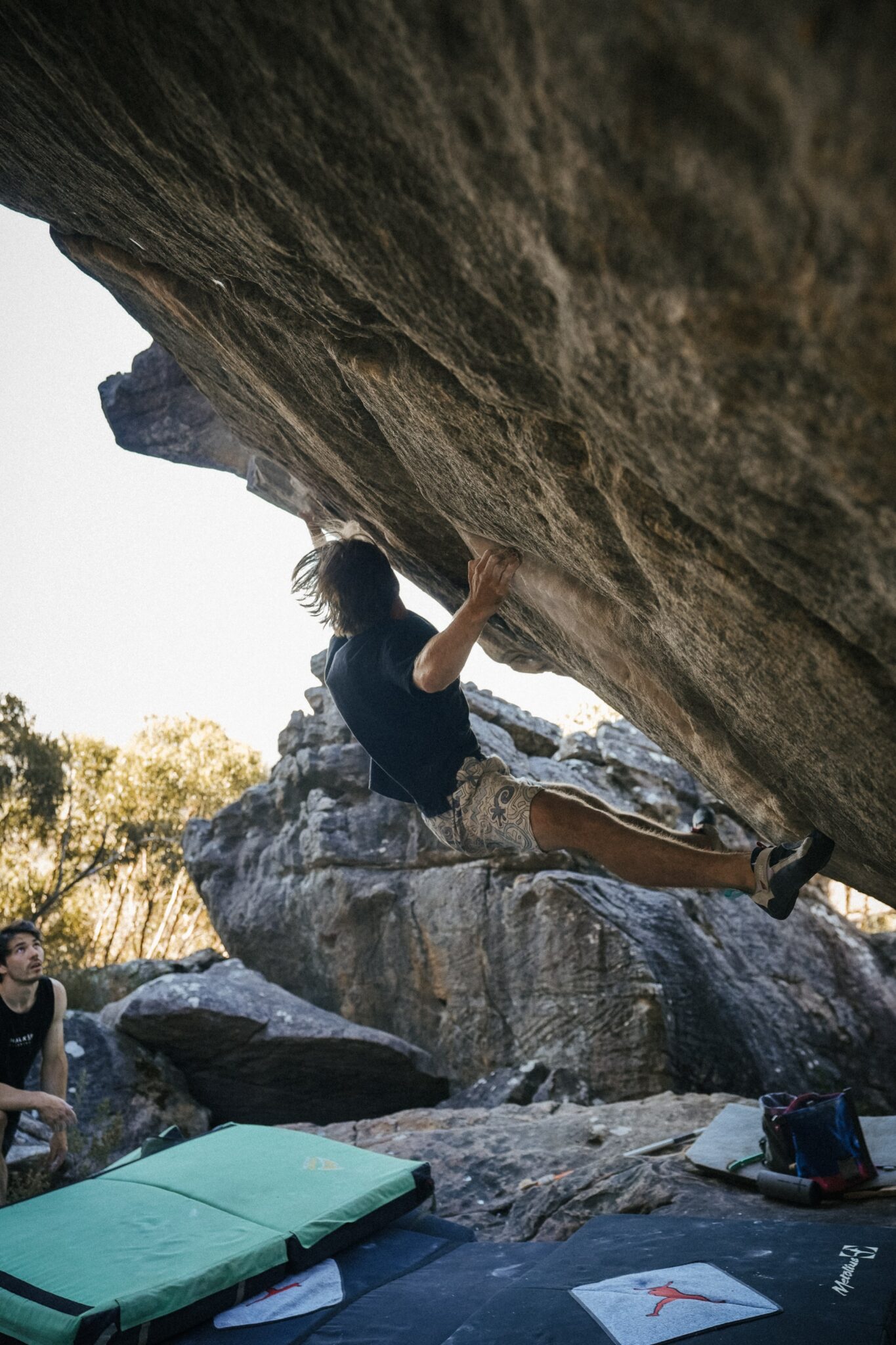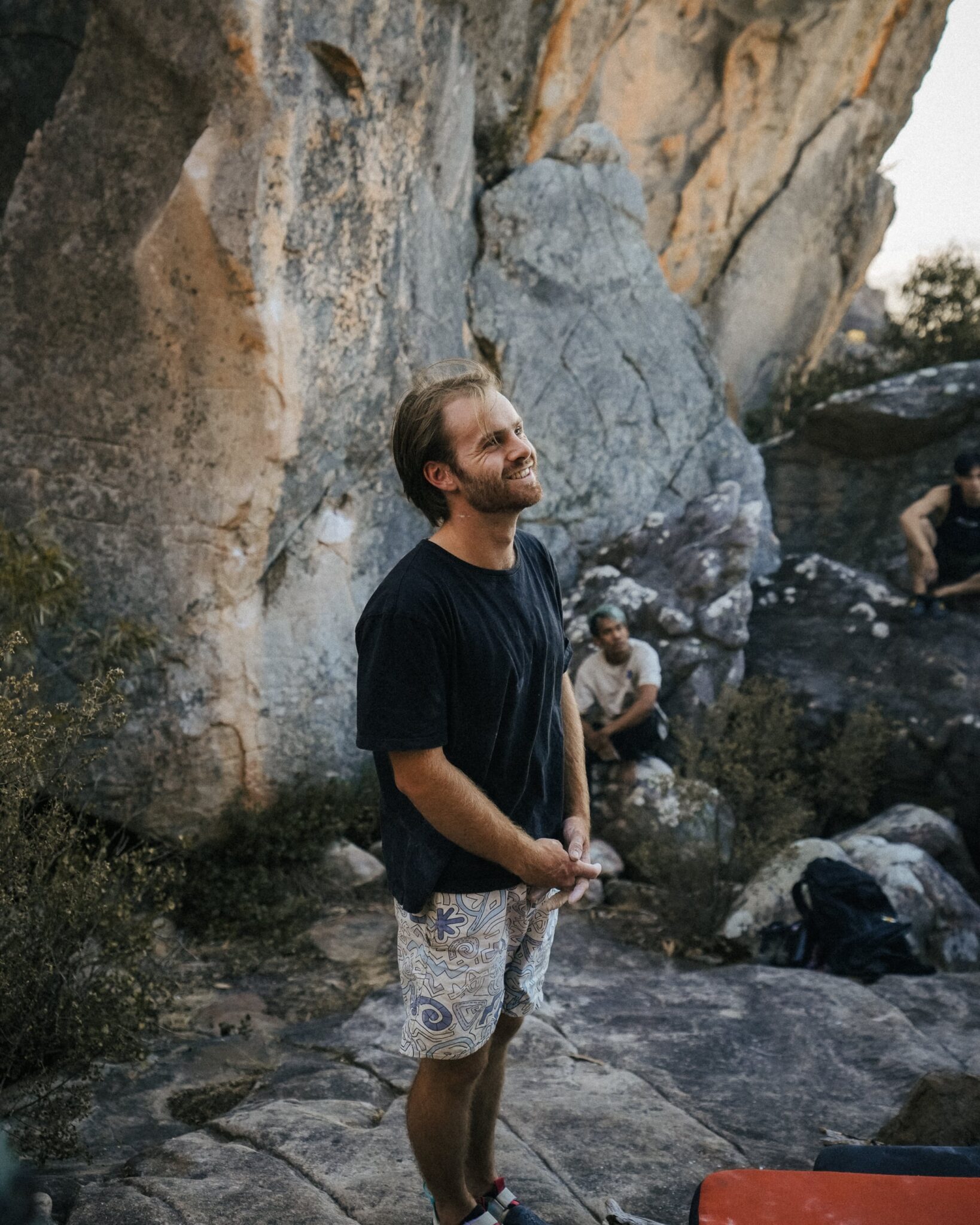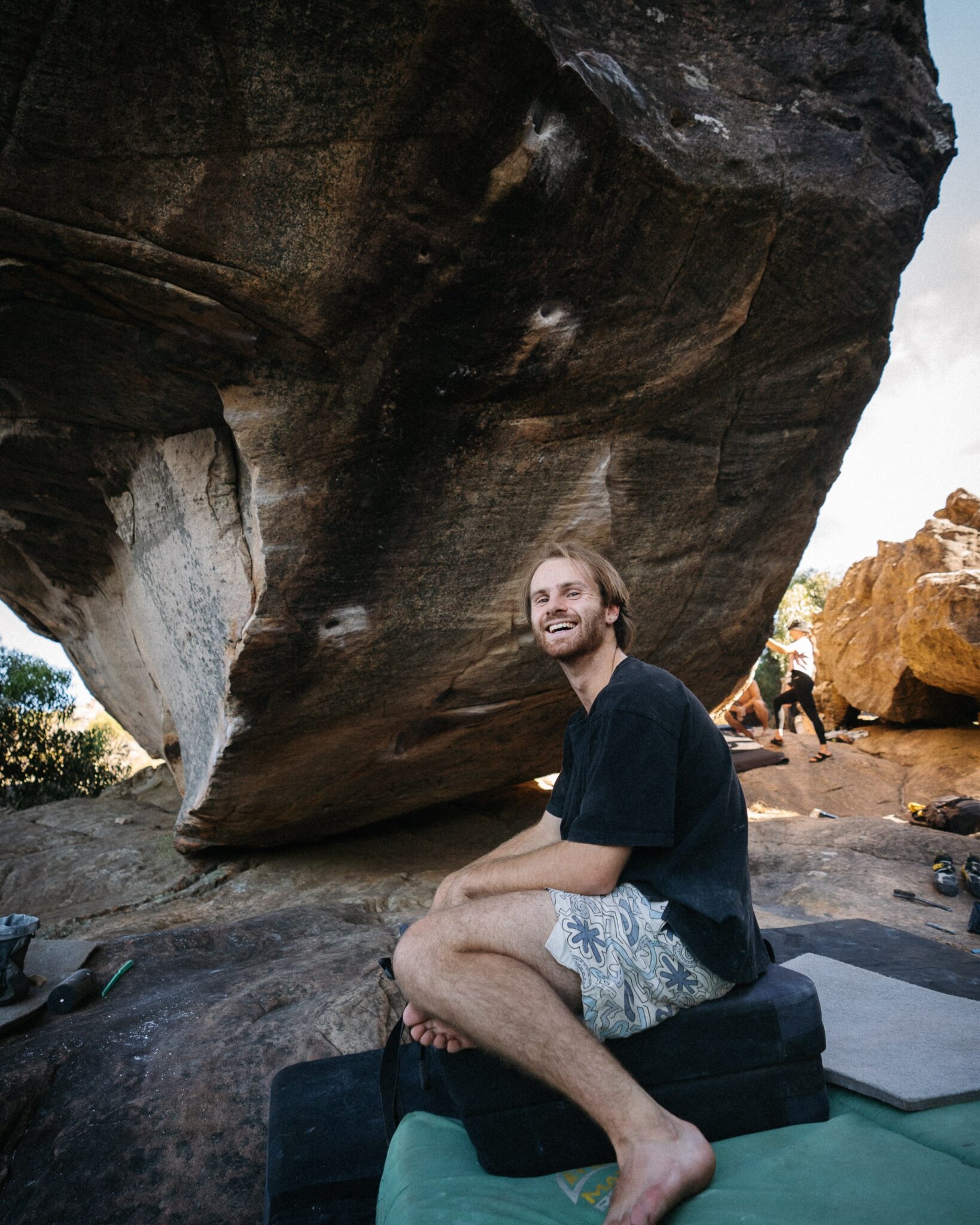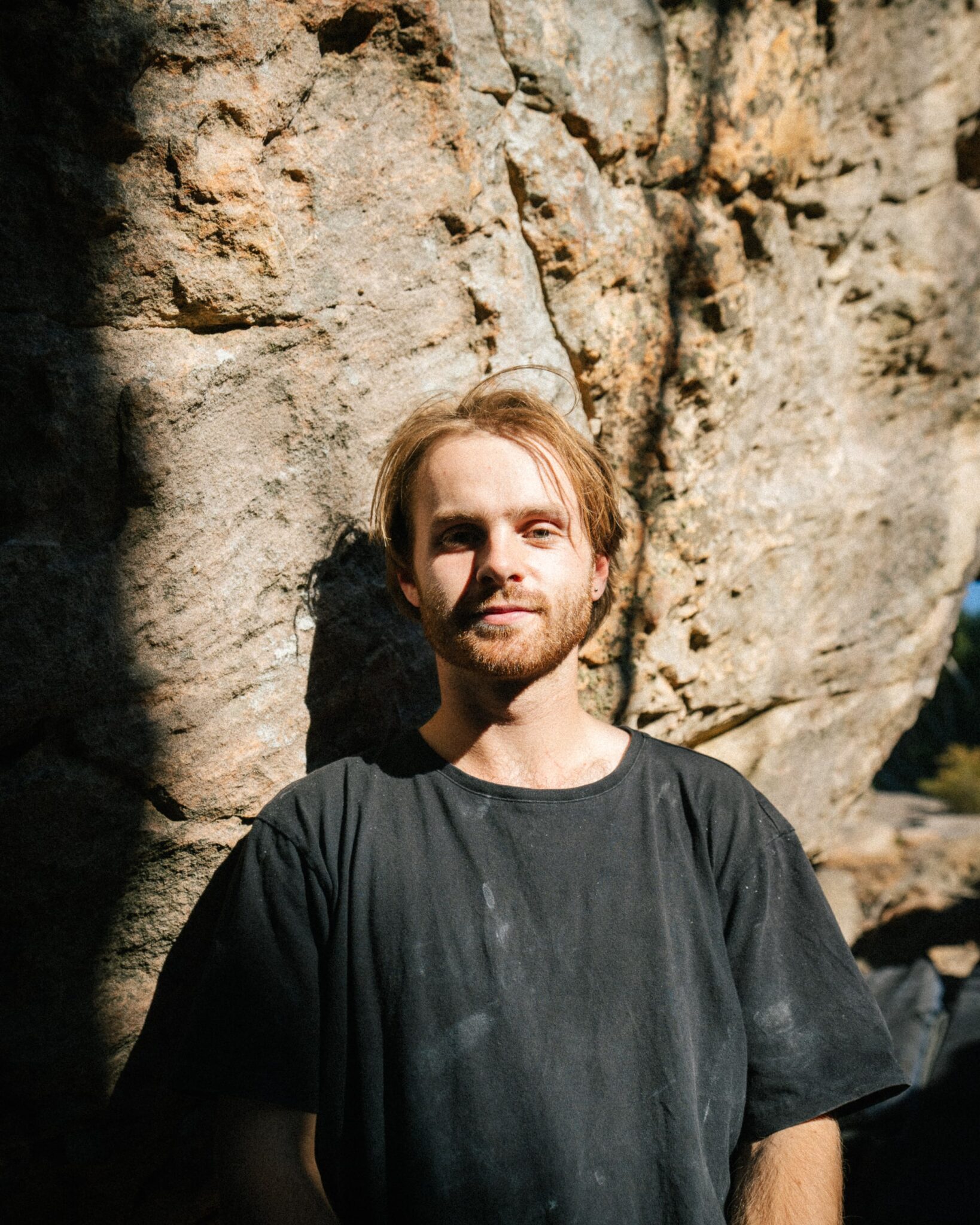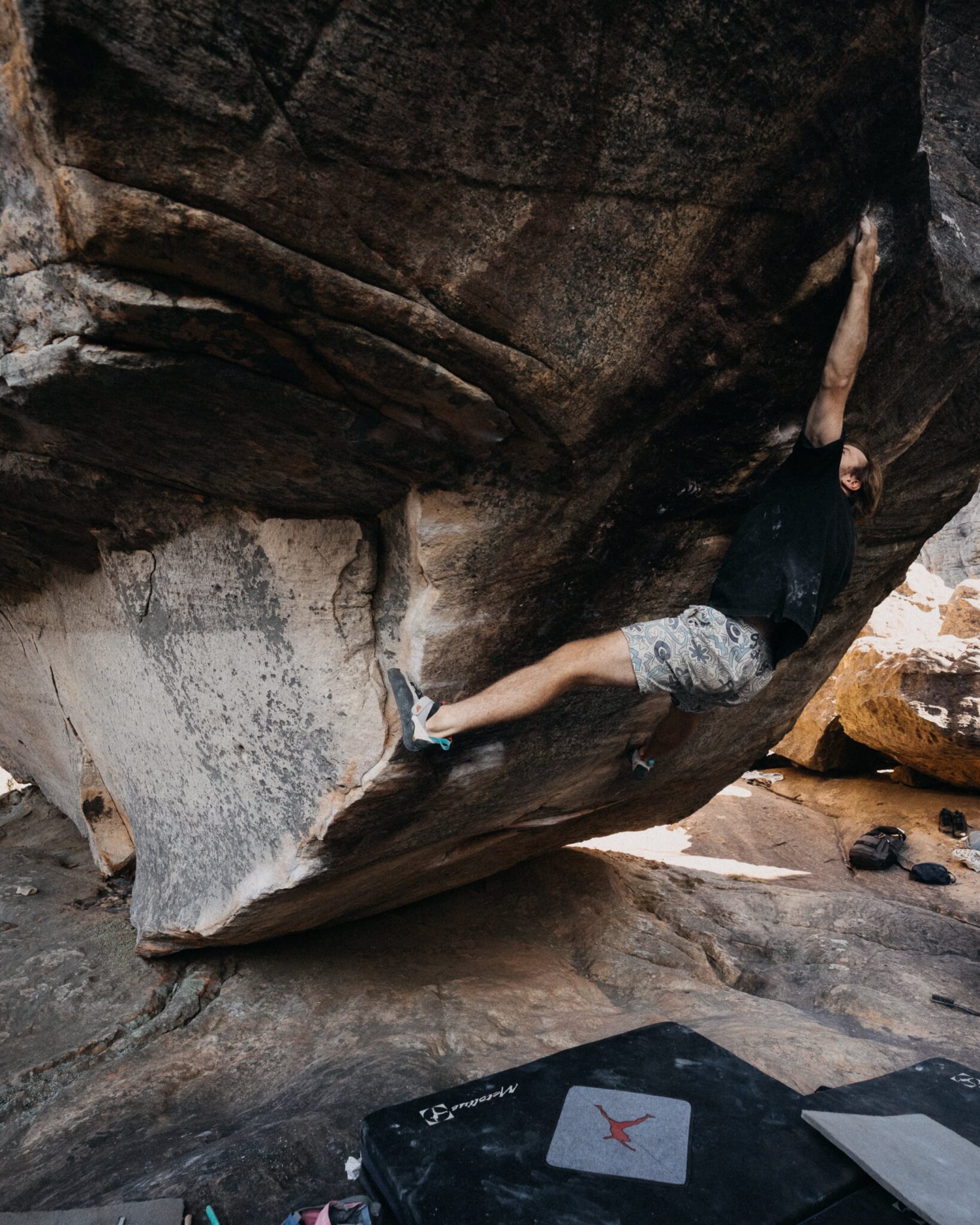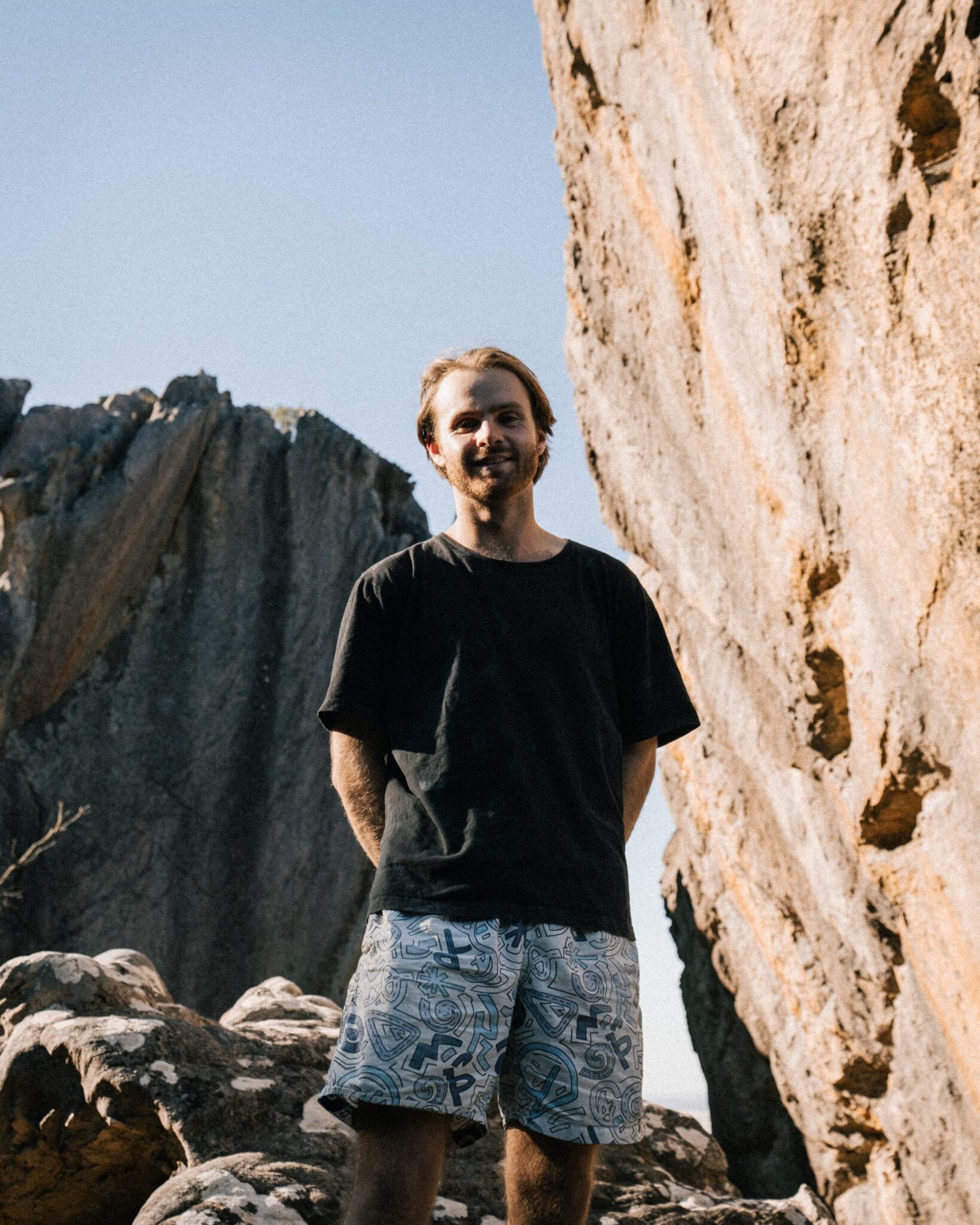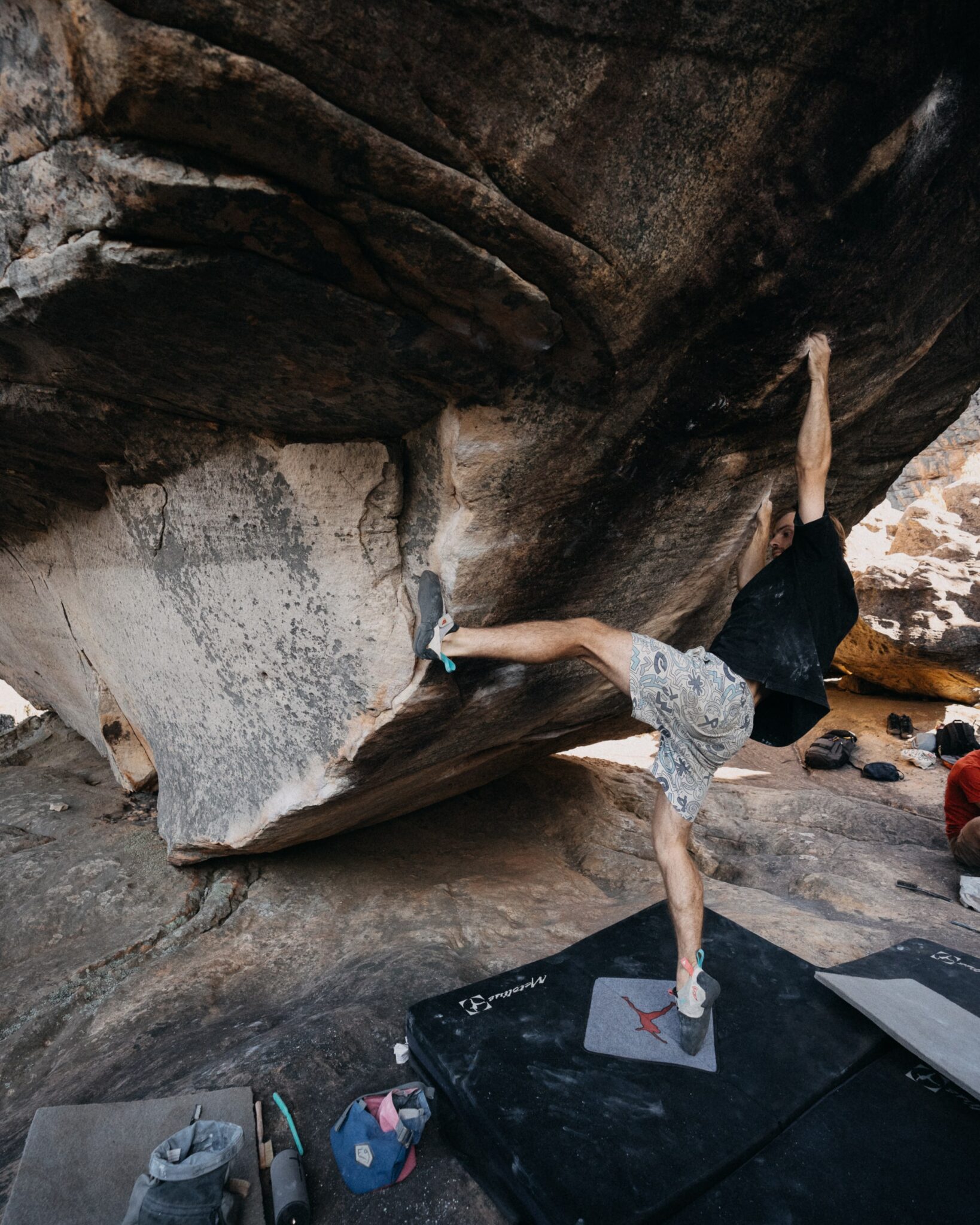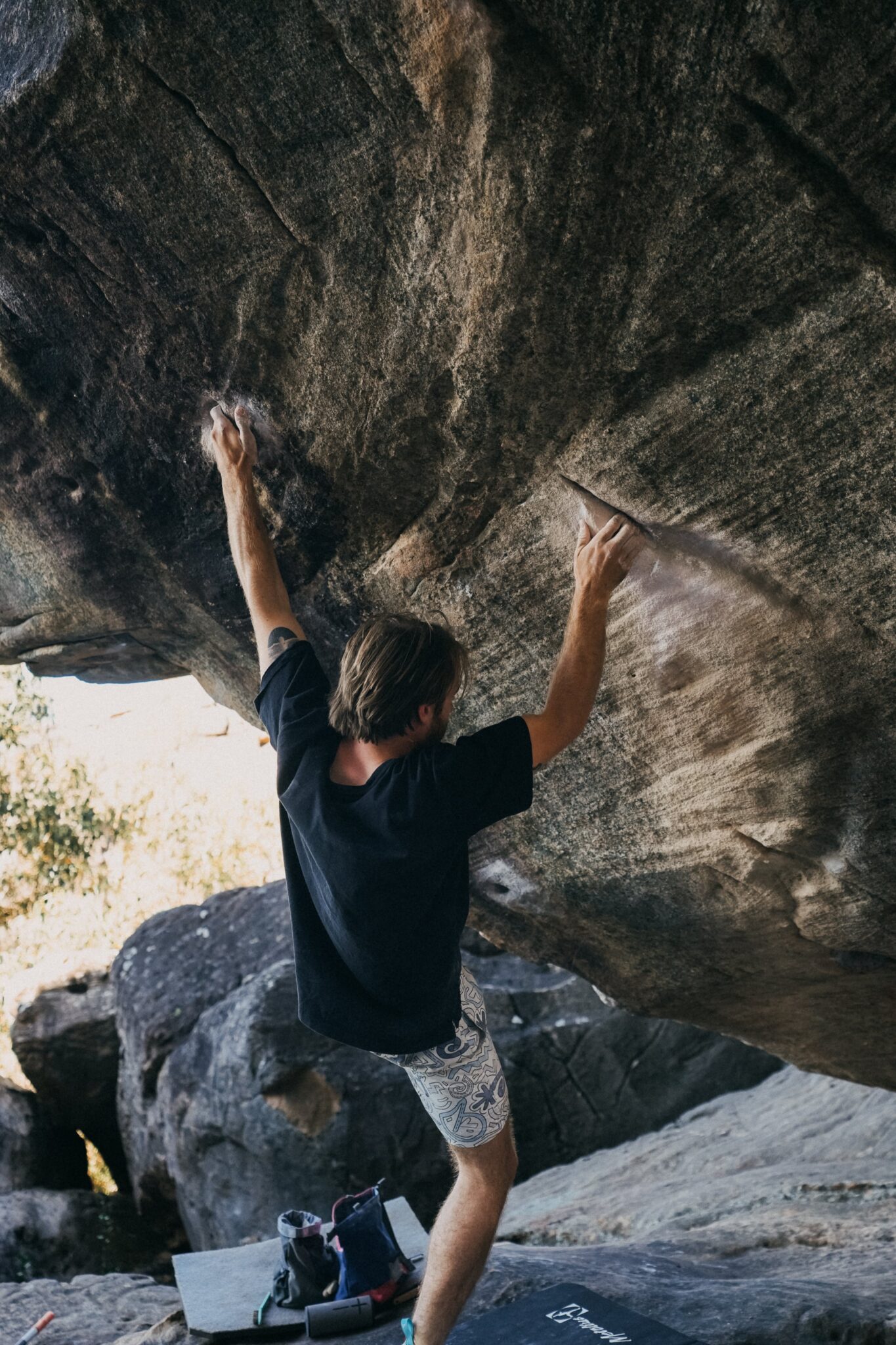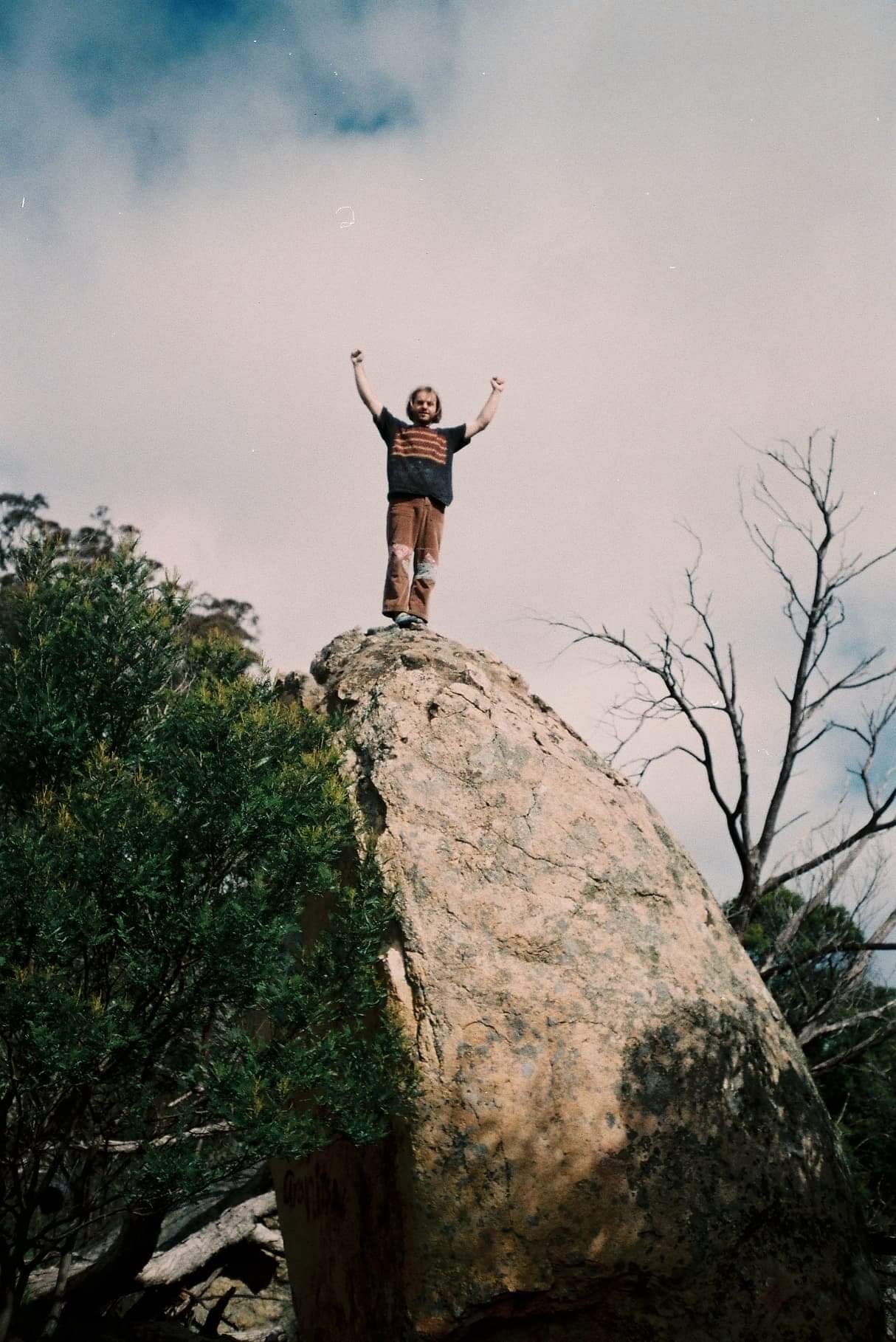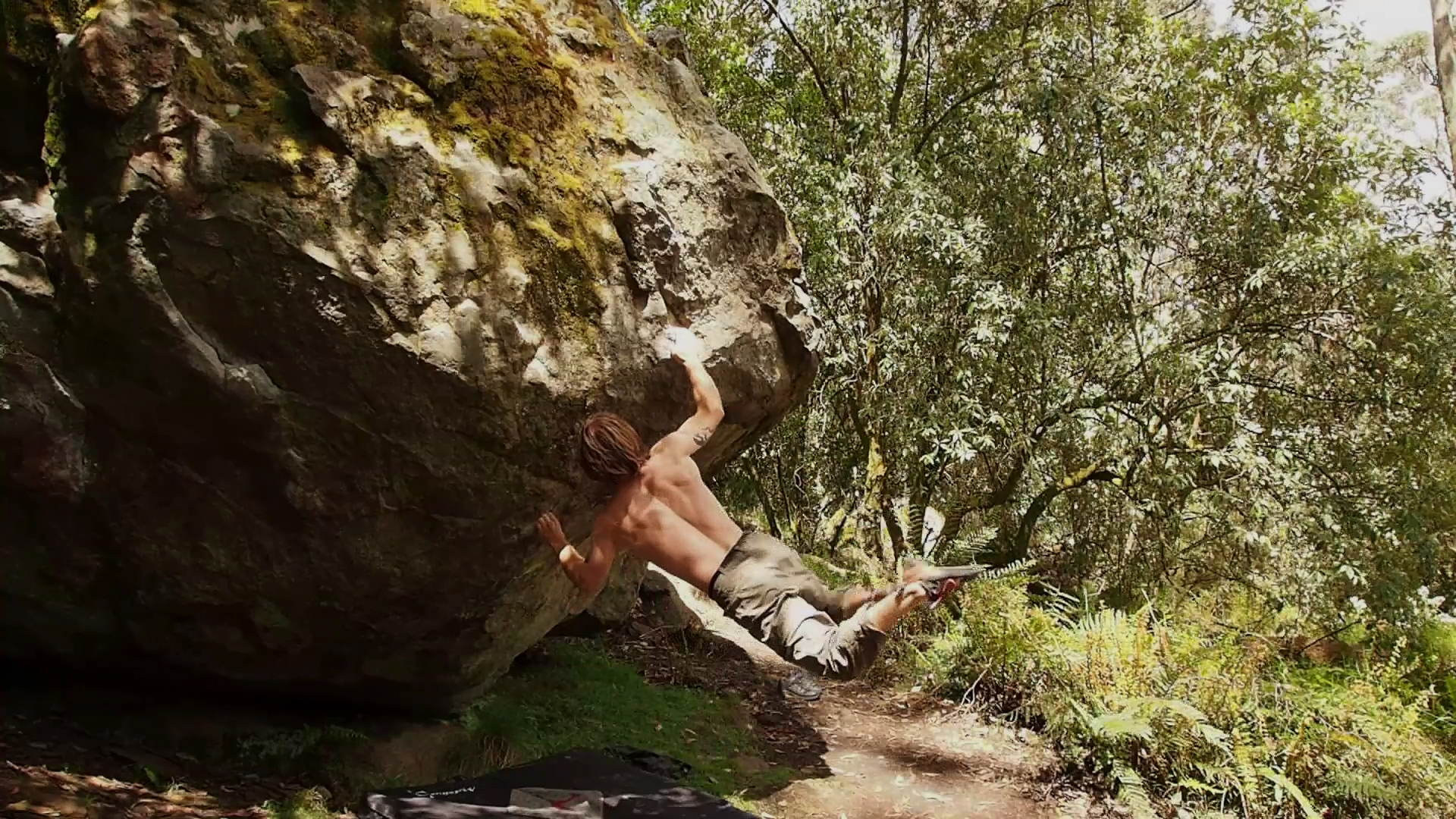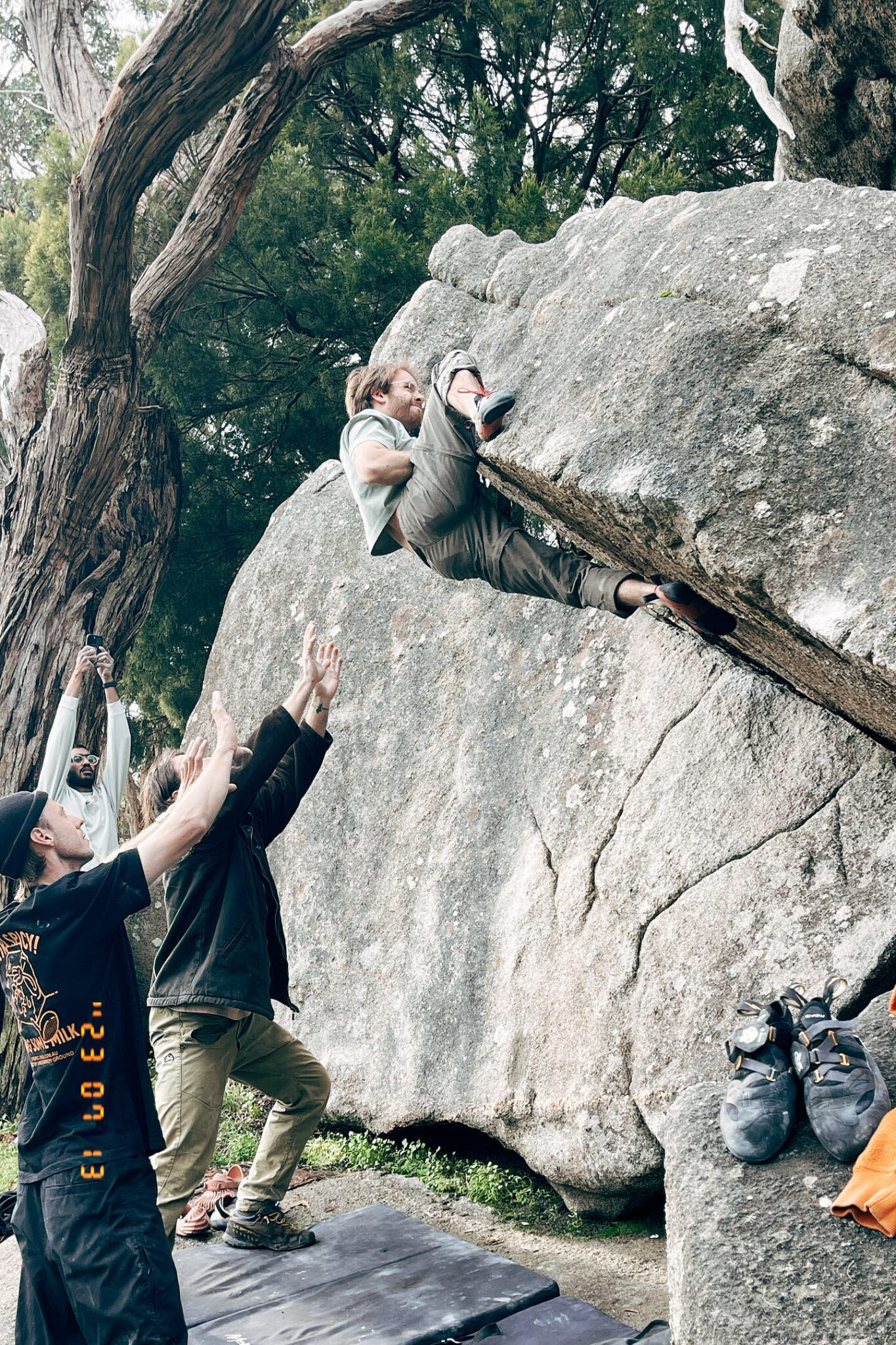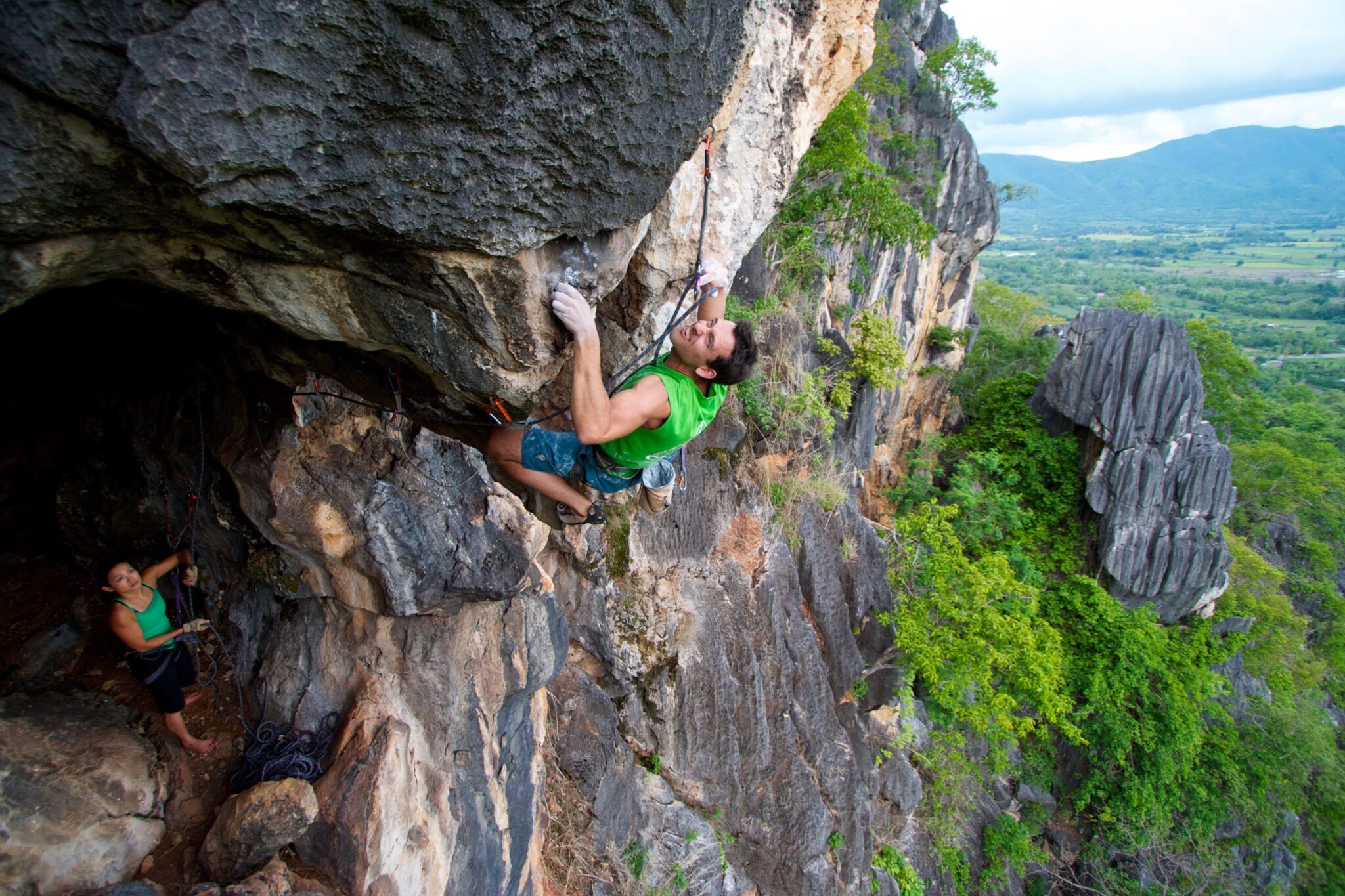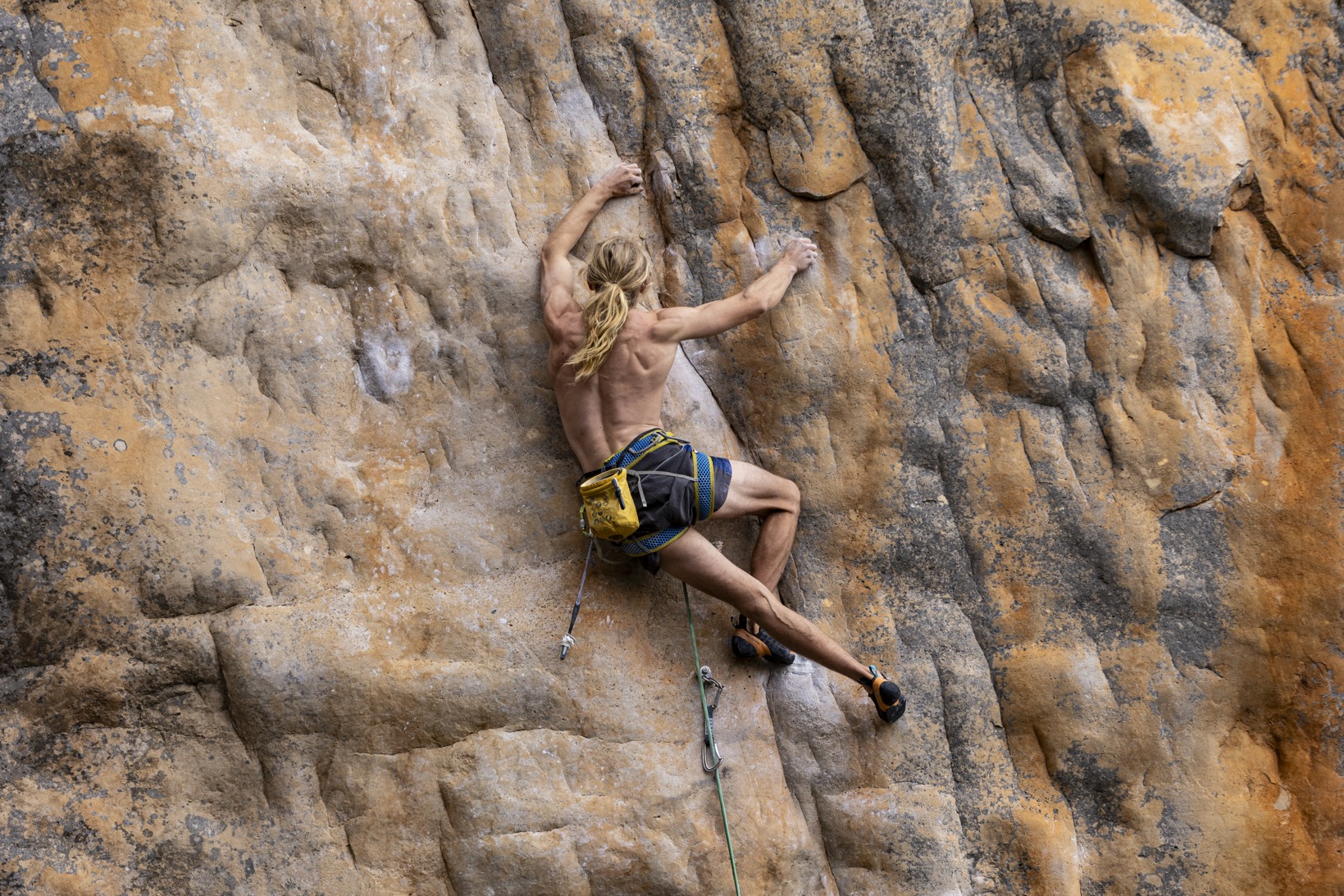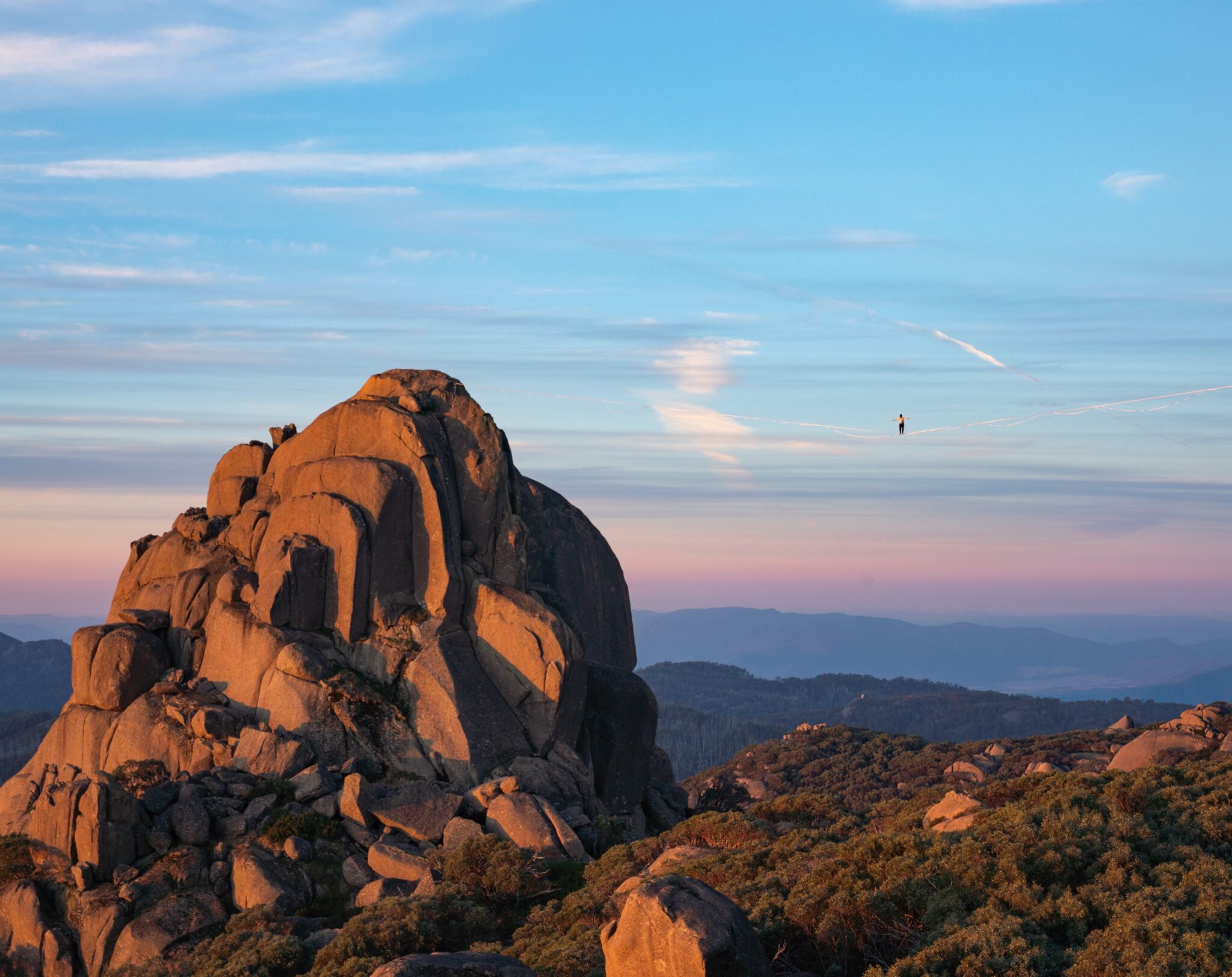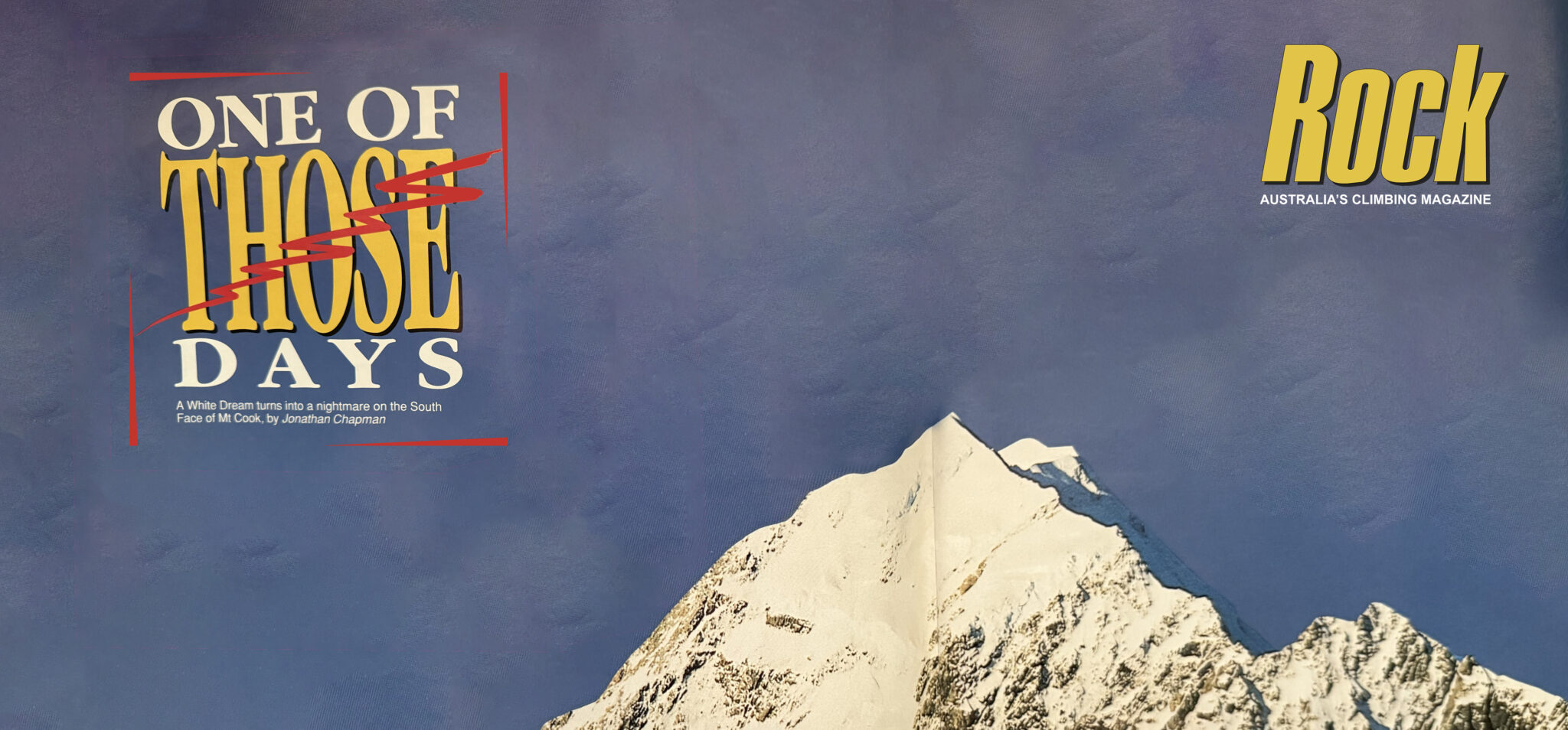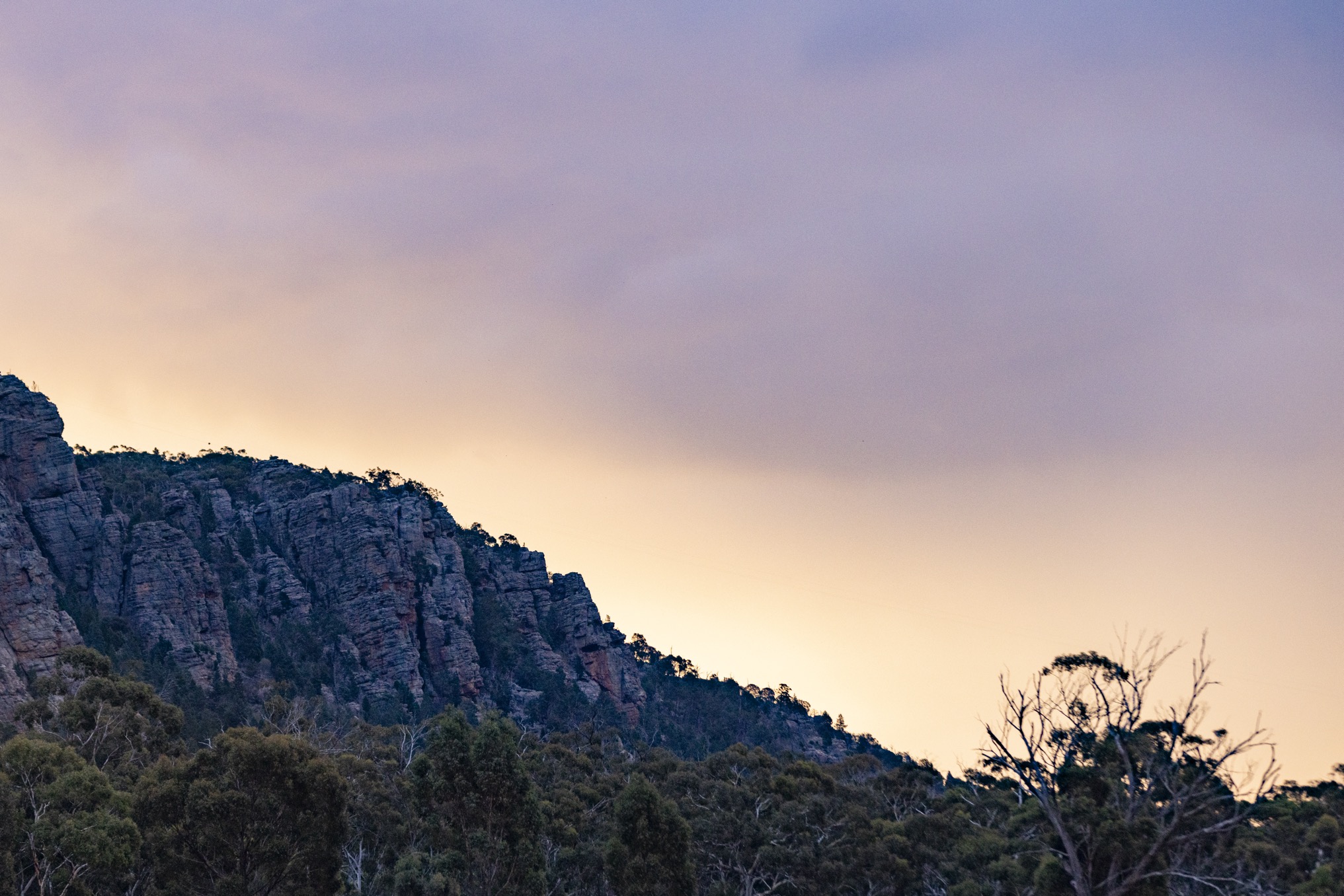Getting to know Rock Climber Fraser Gust
(This story originally featured in Vertical Life #47)
Fraser began bouldering outdoors at 17, using couch cushions as a crash pad, because the climbing gyms were too hard to get to. These days they’re still racking up bouldering first ascents, checking out the comp scene and exploring how climbing has an opportunity to be inclusive of all genders.
You’re known for your bouldering first ascents. How did that become your thing?
Bouldering first ascents are something I’ve been doing since I started climbing! I was 17 when I started climbing so I didn’t have a license. The nearest gym was a while away and pretty tough to get to by public transport, so I just started wandering around the beaches near where I lived on the Mornington Peninsula and finding boulders.
I bought a pair of old climbing shoes from a friend at school, stole some couch cushions from mum’s house and I would go down to the beach and put up new problems after school. You can still find most of them on the crag—a lot of them are pretty rubbish, but there are a couple of gems in there. Seeing them get repeated from time to time always makes me smile. Those boulders I was just doing after school to avoid studying have had a surprisingly lasting impact on the area.
I’m very grateful for that being my avenue into climbing, I feel like it gave me a slightly different perspective than a lot of people who start by solely climbing in a gym.
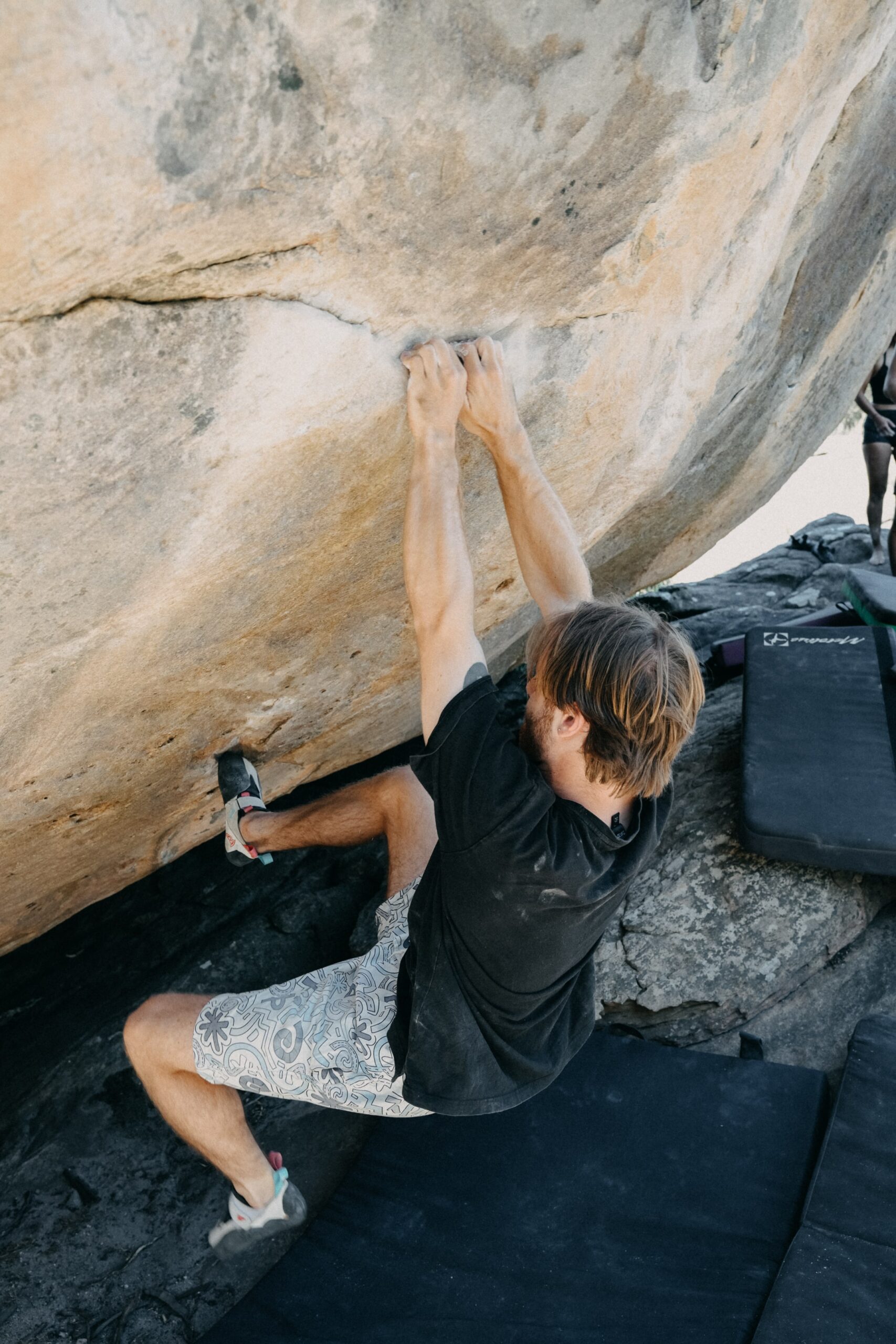
Do you have any FAs that stand out as meaningful to you?
Last year I did two first ascents that were pretty special to me, Sound and Colour at Leanganook and Twelfth Night Sit Start at Camels Hump. I was proud of both of them for being quality, difficult climbs that I feel add a lot to the bouldering around Melbourne, but both climbs felt important for other reasons too.
Sound and Colour is a beautiful granite compression line that I tried for about six days last autumn. I named it after the song by The Alabama Shakes, but also because over the course of working on it I really started to notice and fall in love with all the small details of the area. I started to appreciate the sounds of the birds and the changing colours as it approached winter.
It was a welcome reminder that the areas we climb in are more than just the pieces of rock there.
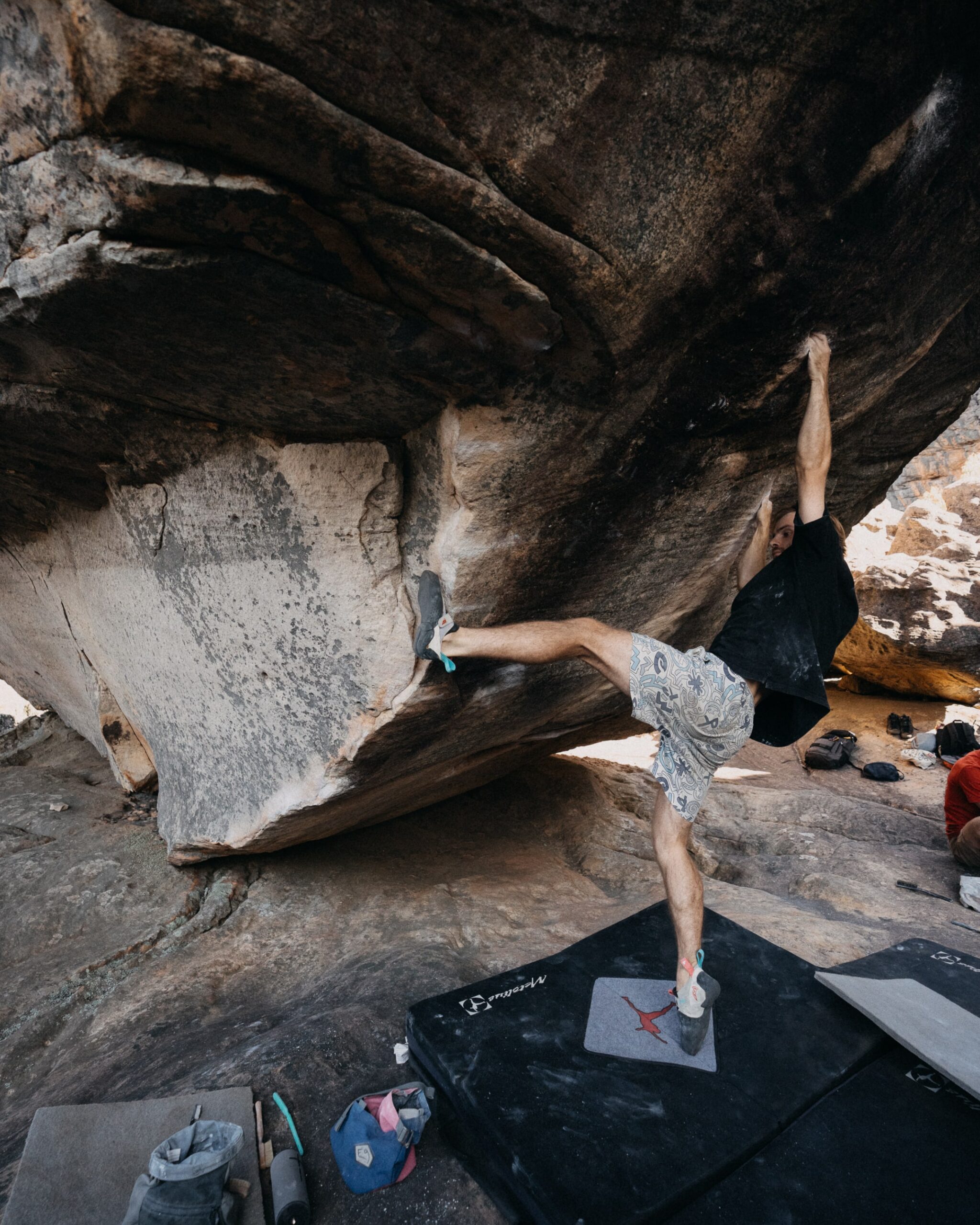
Twelfth Night had a whole different element that made it special for me. The day after I got my license at 18 I drove out to Camels Hump to go bouldering. It was the middle of winter and I got significantly snowed on (don’t climb there in winter!), but one of the boulders I went to was the “globe boulder”, which has Twelfth Night on it. The stand start was established a while back, but the sit start was a fairly long standing project that, over the last five years, I’d looked at, touched the holds on, even tried to pull on once or twice, but genuinely thought it would never be possible for me.
I visited the boulder again late last year, tried to pull on, and found myself doing the first move. Six days of falling and laughing later I found myself on top! Doing something that I had previously believed would be impossible was an amazing feeling. I was so overjoyed and proud of myself. It opened my eyes to what could be possible for me in climbing.
From beginning bouldering as a solo pursuit, is it fair to say you’ve become much more entwined in the climbing community over the years?
I think climbing is a really great avenue for finding and building community. I think that trying to perform to your best in climbing almost necessitates having a strong community around you.

Climbing is a vulnerable sport. You get scared, you try hard, you set goals, you fail, you try again.
Going through that process while not feeling comfortable with or trying to hide parts of yourself from the people around you makes it even harder. I’m nonbinary and find that it’s really important to find communities where that is respected, understood and welcomed.
I’ve been incredibly surprised and grateful to have found that in climbing. Time and time again, meeting people through working at gyms around Melbourne, going to climbing competitions, or now having just moved out to Gariwerd, the people in climbing spaces have been some of the most open and considerate I’ve met anywhere. It’s very empowering to feel able to be purely, openly yourself and have that be supported, while you’re trying to send your proj.

What about comp climbing? Competitive sports are famously gender-binary.
I’ve done a fair amount of competing in the last few years, from state level competitions to social comps around Australia, all in some sort of gender inclusive category. I started competing largely because I wanted to prove to people that the gender inclusive category in competitions should be taken seriously. I wanted to show spectators, organisers, and other would-be competitors in the category that it was worthwhile and important.
I think even in the roughly three years I’ve been competing I’ve seen a big change. The number of competitors has increased, the level of the competition and route setting has gone up, and now there’s a gender inclusive category at the national level of competition. There’s still a way to go for it to catch up to the binary categories but it’s a hopeful start.
Climbing is still a fairly young sport when it comes to competition, so it has a really interesting opportunity to include gender diverse people in a way that may be more difficult for more entrenched sports like athletics or football.
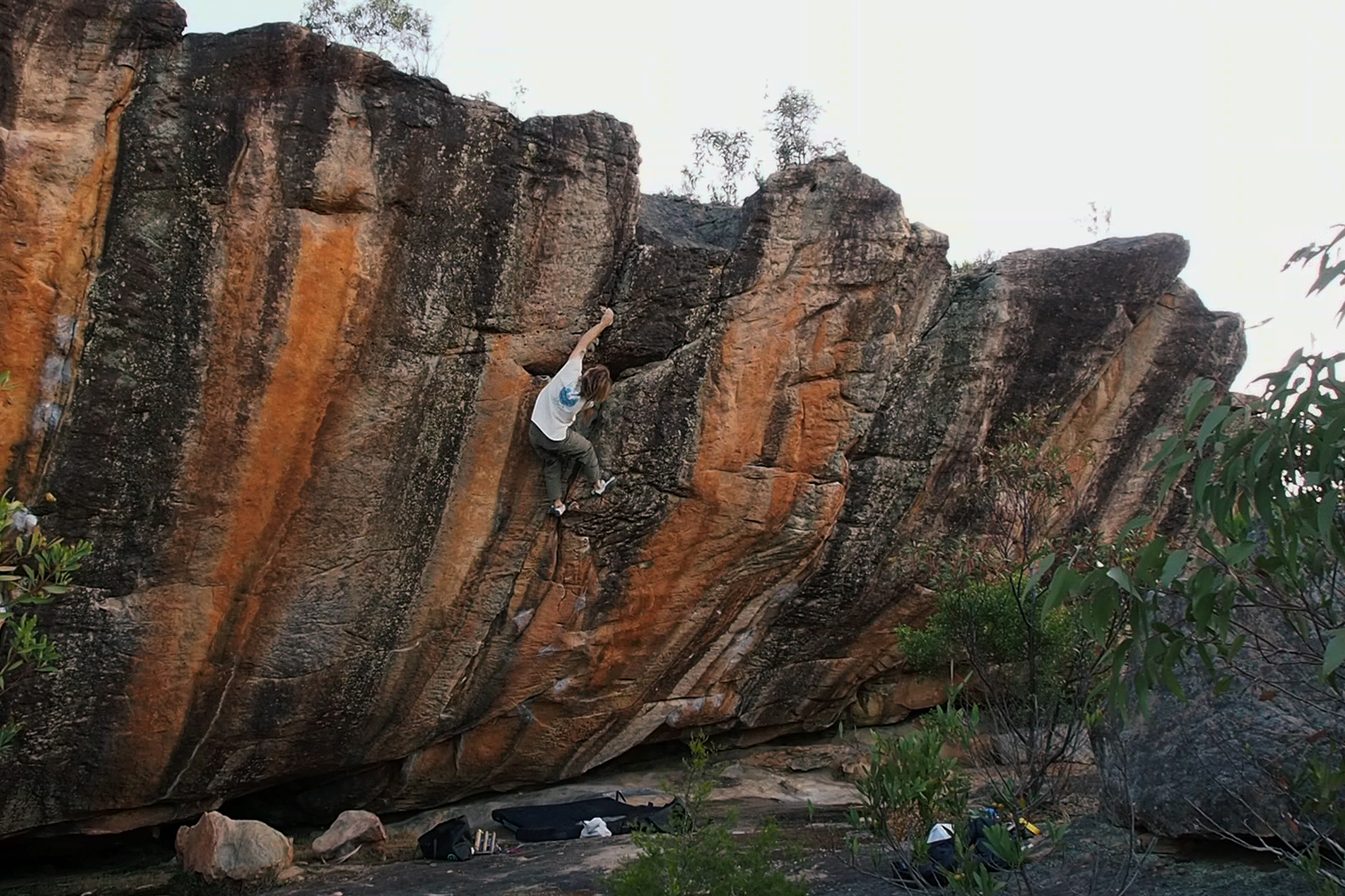
Despite caring really strongly about the inclusion of gender queer people in climbing, I think I’m actually going to take a step back from it. I’ve found it odd competing against people that any other day of the week I’d be climbing alongside and cheering on. I like climbing for its collaborative nature, so I think I’m going to stick to climbing outdoors for a little while.
You’ve also travelled a bit for climbing… How were the climbing communities different in Japan and NZ?
I’m really grateful for the experiences I’ve had climbing internationally. It’s definitely opened my eyes to different ways to look at climbing. From the Japanese climbing community I took away looking at climbing not as a sport or hobby, but as a craft or practice. It’s something to be worked on slowly and persistently over the long term. Climbing outdoors at Mt Ogawayama, there felt like there was a much smaller emphasis on sending boulders. People were always trying something really hard for them and improving little bit by little bit, which I found very inspiring. Every moment of learning and success on the way to sending was important.
In Aotearoa/NZ I learnt a lot about boldness and sharing in climbing. I climbed for a week in Kura Tawhiti/Castle Hill Basin and the boulders/boulderers there blew me away. The lines are so amazing and tall—to climb them you need to be so confident in your own ability and stay so centered and in control while you’re up there. It’s a headspace that is definitely helpful much more broadly—in climbing and in life—than just in the avenue of highball bouldering. On top of being incredibly brave, the climbers there were some of the most instantly warm and helpful people I’ve met. They were incredibly keen to share their knowledge and the ethics of the local area. I’ve been trying to take this away with me, and share knowledge around climbing at and taking care of the climbing areas locally.

